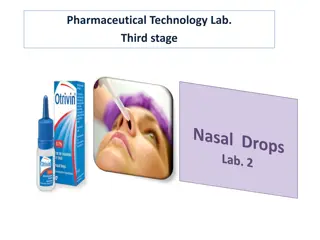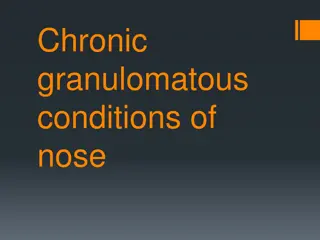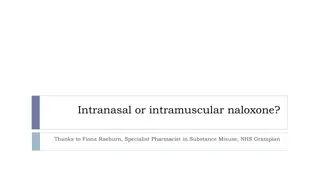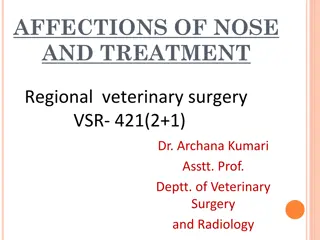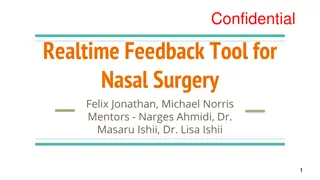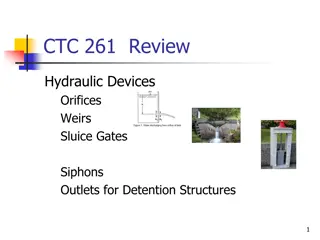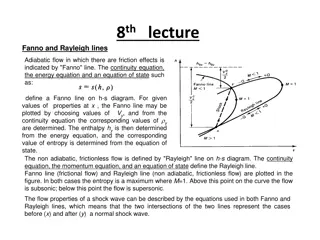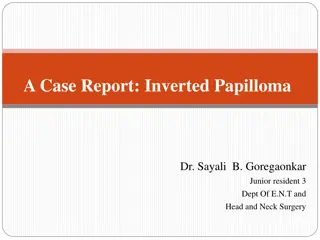Comprehensive Overview of High-Flow Nasal Cannula (HFNC) Systems
High-Flow Nasal Cannula (HFNC) systems, defined as a system providing heated and humidified oxygen at high flow rates, have various applications in healthcare settings including rural hospitals. This presentation covers the definition, indications, contraindications, complications, setup, and use of HFNC systems, focusing on the Airvo 2 system. Additionally, it discusses the generation of PEEP with HFNC, patient comfort, disadvantages, and the ongoing debate regarding its effectiveness in treating respiratory failure and pre-oxygenation for intubation.
Download Presentation

Please find below an Image/Link to download the presentation.
The content on the website is provided AS IS for your information and personal use only. It may not be sold, licensed, or shared on other websites without obtaining consent from the author.If you encounter any issues during the download, it is possible that the publisher has removed the file from their server.
You are allowed to download the files provided on this website for personal or commercial use, subject to the condition that they are used lawfully. All files are the property of their respective owners.
The content on the website is provided AS IS for your information and personal use only. It may not be sold, licensed, or shared on other websites without obtaining consent from the author.
E N D
Presentation Transcript
HIGH-FLOW NASAL CANNULA Prepared by Shane Barclay MD
OBJECTIVES 1. Define High Flow Nasal Cannula system. 2. Review the indication of HFNC in a rural setting. 3. Review the contraindications and complications of HFNC. 4. Cover the actual set up and use of a HFNC system.
HIGH FLOW NASAL CANNULA - HFNC Definition: System providing heated and humidified oxygen delivered up to an FiO2 100% and flow rates up to 60 70 liter per minute.
HFNC - INDICATIONS HFNC has various applications. Those listed below could be applicable in a rural hospital setting. 1. Hypoxic Respiratory Failure. - pneumonia, pulmonary edema, CO poisoning, acute asthma, PE. 2. Pre-intubation oxygenation. 3. Palliative (do not intubate) scenarios. Historically used in pediatrics, but now increasingly in adults.
HFNC - CONTRAINDICATIONS 1. Epistaxis. 2. Recent nasal surgery. 3. Known nasal obstruction. 4. Basilar skull fracture.
HFNC -COMPLICATIONS 1. Epistaxis. 2. Gastric distention. 3. Local discomfort and pressure areas. 4. Excessive PEEP in newborns (causing pneumothorax). 5. Delayed intubation while hoping HFNC will correct things.
HFNC ACTUAL SYSTEMS There are several commercial products available. This presentation will cover the Airvo 2 system. The simplest way to demonstrate are the 4 videos showing Airvo 2 on the accompanying web page. http://remstarbc.ca/Airway-Airway-Airway.php Each is about 6 8 minutes long.
HFNC SOME OTHER INFORMATION 1. CPAP HFNC have been shown to generate some degree of PEEP if the patient keeps their mouth closed. PEEP can be in the range up to 5 7 cm H2O when using 60 lpm. 2. Patients report it is much more comfortable than dry air ie NRB, prongs etc. 3. Disadvantage is that it is harder to set up than prongs or NRB.
HFNC DOES IT WORK? Oddly enough the jury is still out on a complete answer. There are several contradictory studies for acute respiratory failure and for pre-oxygenation for intubation. For now, HFNC is worth using for acute or pending respiratory failure, especially in children. For RSI pre-oxygenation, if it can be set up quickly, it would seem a reasonable option as there is positive research in this area.
HFNC DOES IT WORK? A quick note on nasal prongs versus HFNC for pre-oxygenation. 1. If you put on nasal prongs, then turn the regulator up to 15 lpm and then continue to turn the knob to maxiumum, you can actually get up to 40 60 lpm flow from the wall. 2. You can put that through a regular nasal cannula before and during intubation and still achieve high flow oxygen that may assist in apneic oxygenation. 3. Although this is dry air , used for short term is not detrimental to the patient. 4. It is also much faster to set up than HFNC.



